People often ask me when to visit Nuremberg, and honestly, I think of two totally different vibes. There’s the legendary Christmas market, where the city glows with holiday lights and you can grab a warm Nürnberger Rostbratwurst. For pure Nuremberg magic, December and the Christmas markets just hit different—festive, cozy, and buzzing with energy you won’t find any other time. The whole place transforms with cheerful stalls, the sweet smell of mulled wine, and that classic German holiday spirit.
But I really love Nuremberg in spring and autumn too. These seasons feel peaceful and calm, perfect for wandering the Old Town, hanging out by the Pegnitz river, or exploring historic sites at your own pace. The weather’s gentler, the crowds thin out, and you get to enjoy parks and cafés without any rush.
So, it kind of comes down to what you’re after—do you crave that festive excitement or the mellow charm of quieter months? Both seasons have something special for every traveler.
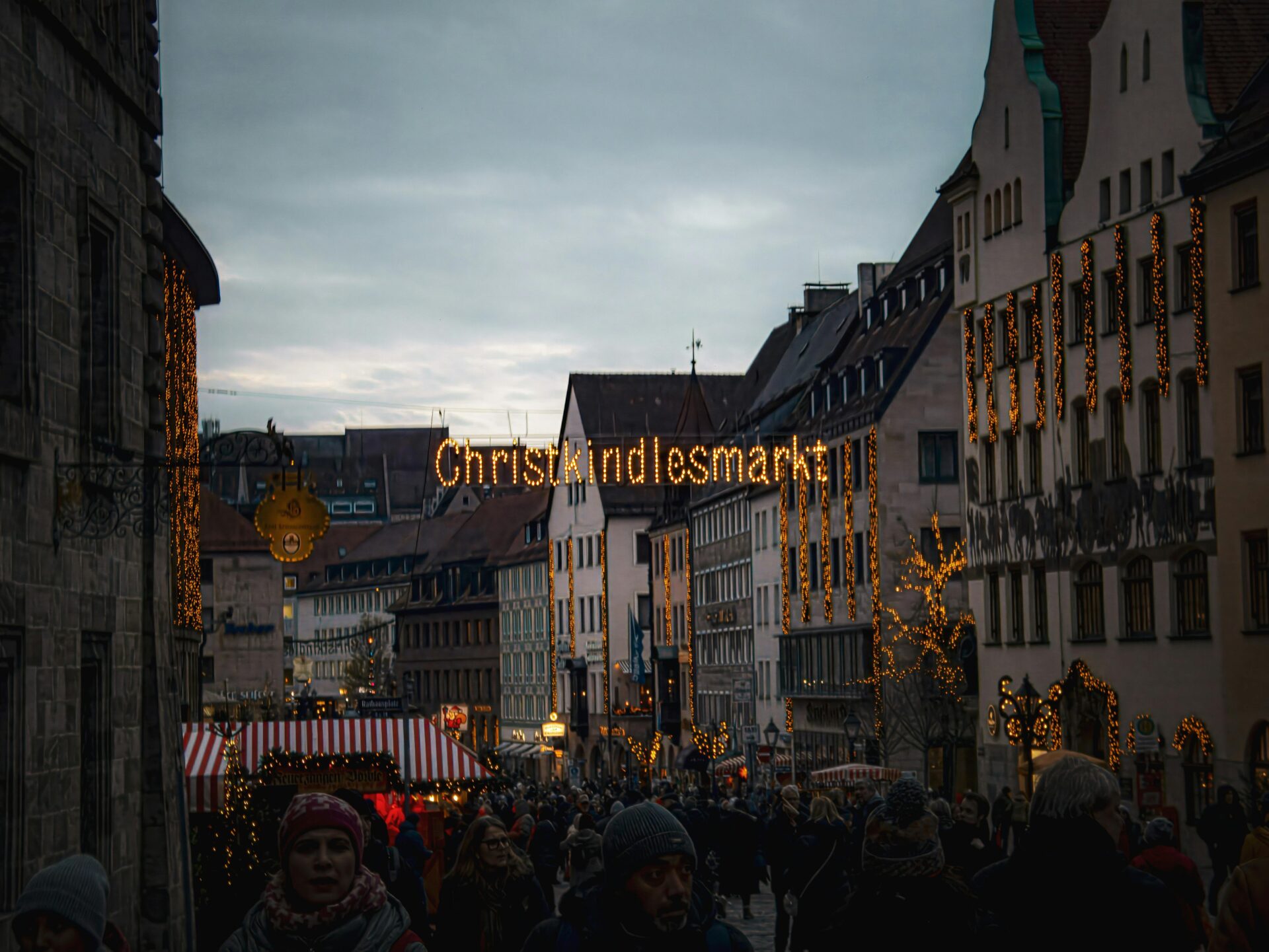
The Allure of Nuremberg’s Christmas Markets
Each December, Nuremberg turns into a festive wonderland. Lights sparkle everywhere, crowds fill the streets, and you can feel the weight of centuries-old traditions. When I walked through the city in December, mulled wine and gingerbread scents filled the air, and carols echoed off the old church walls.
Atmosphere and Festive Traditions
Nuremberg feels genuinely magical at Christmas. The Old Town’s cobblestone streets shimmer under twinkling lights. Hauptmarkt, the main square, turns into a cozy little village with those iconic red and white striped roofs on every wooden stall.
I noticed so much joy—locals greeting friends, visitors wide-eyed at the scene. Every evening, excitement builds as everyone gathers, mugs of hot glühwein in hand, to watch the Christkind’s arrival. The golden-robed angel opens the market each year, and carols fill the cold night air. It’s wild to see 16th-century traditions come to life right in front of you.

Christkindlesmarkt Highlights
The Christkindlesmarkt sits at the heart of Nuremberg’s holiday season. You’ll find it in Hauptmarkt, right by the Frauenkirche, and every stall overflows with handcrafted ornaments, wooden toys, and festive gifts.
I can lose track of time just weaving through the aisles. Artisans carve nativity scenes or blow glass baubles while you watch. Sometimes, choirs sing at the booths, adding to the magic. The Christkind herself pops by, reading stories to kids or hosting events.
Don’t skip the “Sister Cities Market” next door—stands from all over the world sell unique international treats and gifts.
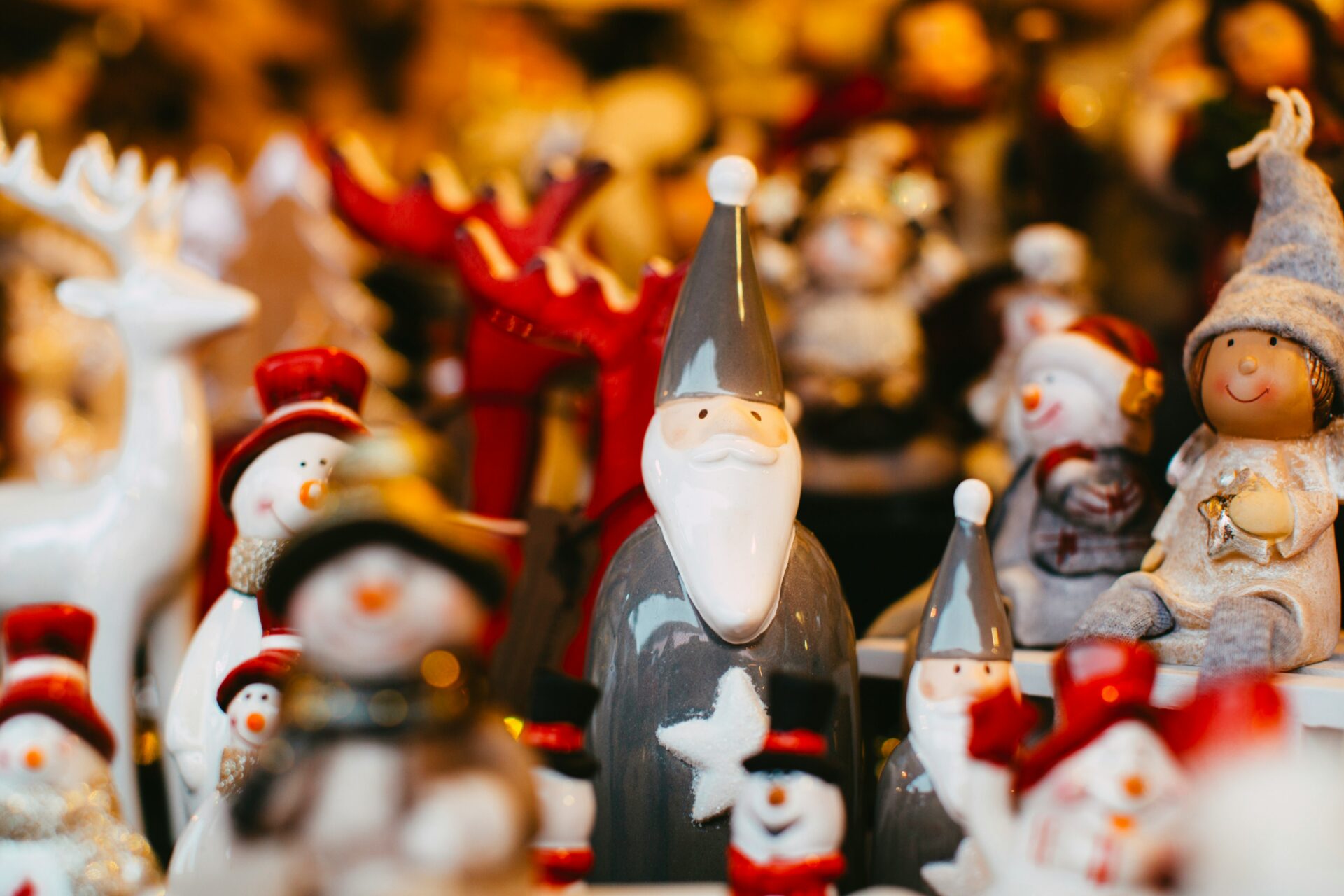
Delicious Holiday Treats and Local Specialties
Half the fun here? Eating, obviously. The air is thick with roasting sausages, candied almonds, and spicy drinks. I always grab a Drei im Weggla first—three little sausages in a fresh bun. It’s perfect for snacking as you wander.
You can’t leave without trying the city’s famous Lebkuchen gingerbread. It’s soft, spicy, sometimes dipped in chocolate—basically, Christmas in a bite. I usually pick up a bag to munch as I walk.
Hot glühwein is everywhere—steaming mugs of spiced red wine, though some stalls do a white wine version or non-alcoholic punch for kids. Chocolates, roasted chestnuts, and marzipan tempt you at every turn.
| Must-Try Treats | Description |
|---|---|
| Lebkuchen (Gingerbread) | Soft, spiced, often chocolate-coated |
| Glühwein (Mulled Wine) | Hot, spiced wine served in collectible mugs |
| Drei im Weggla | Local grilled sausages in a bun |
| Gebrannte Mandeln | Sugar-roasted almonds |
| Chocolates & Marzipan | Handmade holiday sweets |
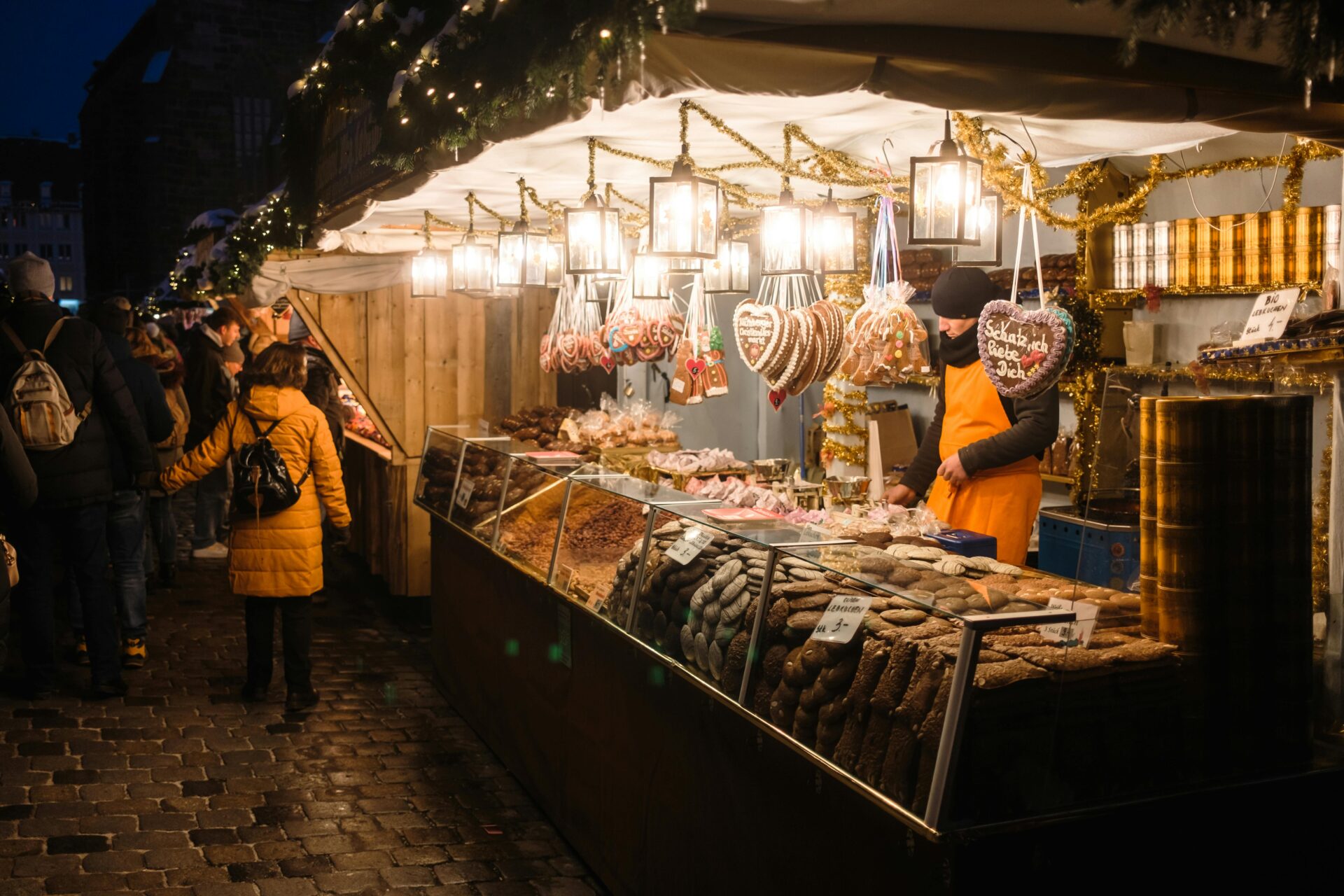
Historic Sites Illuminated in Winter
Nuremberg’s landmarks look extra special under holiday lights. The Frauenkirche towers over the market, its Gothic face glowing beneath strings of bulbs. I found dusk especially magical, with the square packed and lights just starting to twinkle.
Other spots—St. Sebaldus Church, the old city walls—also shine in winter. Walking the Old Town after dark feels like stepping into a storybook, especially if you’re lucky enough to catch a dusting of snow.
Even when the stalls close, you can wander quiet streets, see lanterns in windows, and spot festive displays on balconies. The city really goes all-in for the holidays.
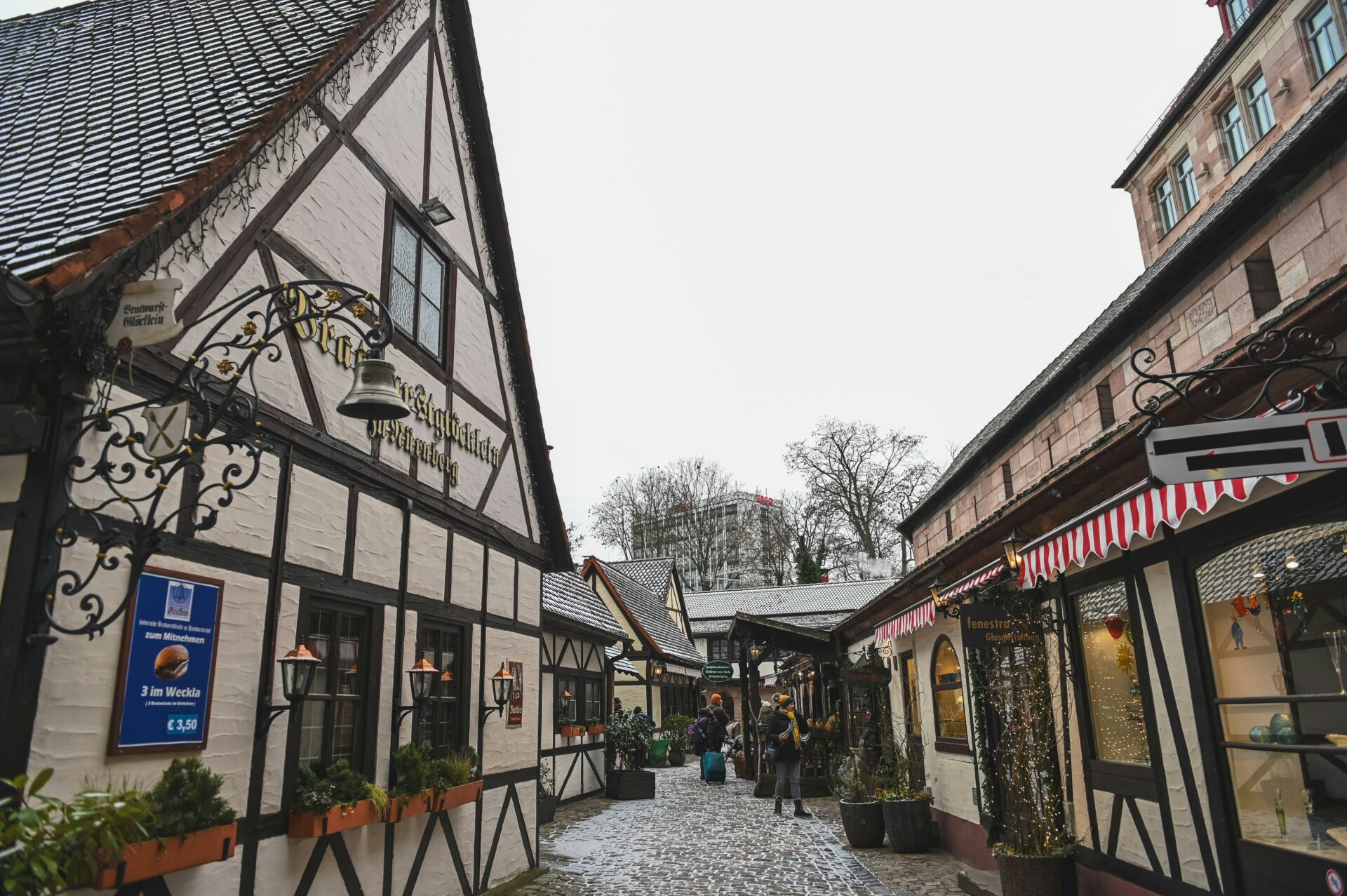
Springtime in Nuremberg: Blossoms and Outdoor Adventures
Spring in Nuremberg has a special energy. Mild weather, blooming trees, and fewer tourists make it one of my favorite times to explore. The city bursts with color, and it’s the perfect excuse to relax in a street café or wander historic streets.
Enjoying Nuremberg’s Parks and Gardens
From March to May, Nuremberg feels fresh and pleasant—temperatures usually range from 10°C (50°F) to 19°C (66°F). I love getting lost in parks like Hesperidengärten or Stadtpark. Tulips, cherry blossoms, and daffodils make everything pop with color.
Sometimes I just sit under the blooming trees or find a quiet bench with a book. On weekends, locals come out for picnics or easy strolls. If I’m feeling active, I’ll rent a bike and hit the trails along the Pegnitz River. The gentle sun and fresh air make it hard to head back inside.
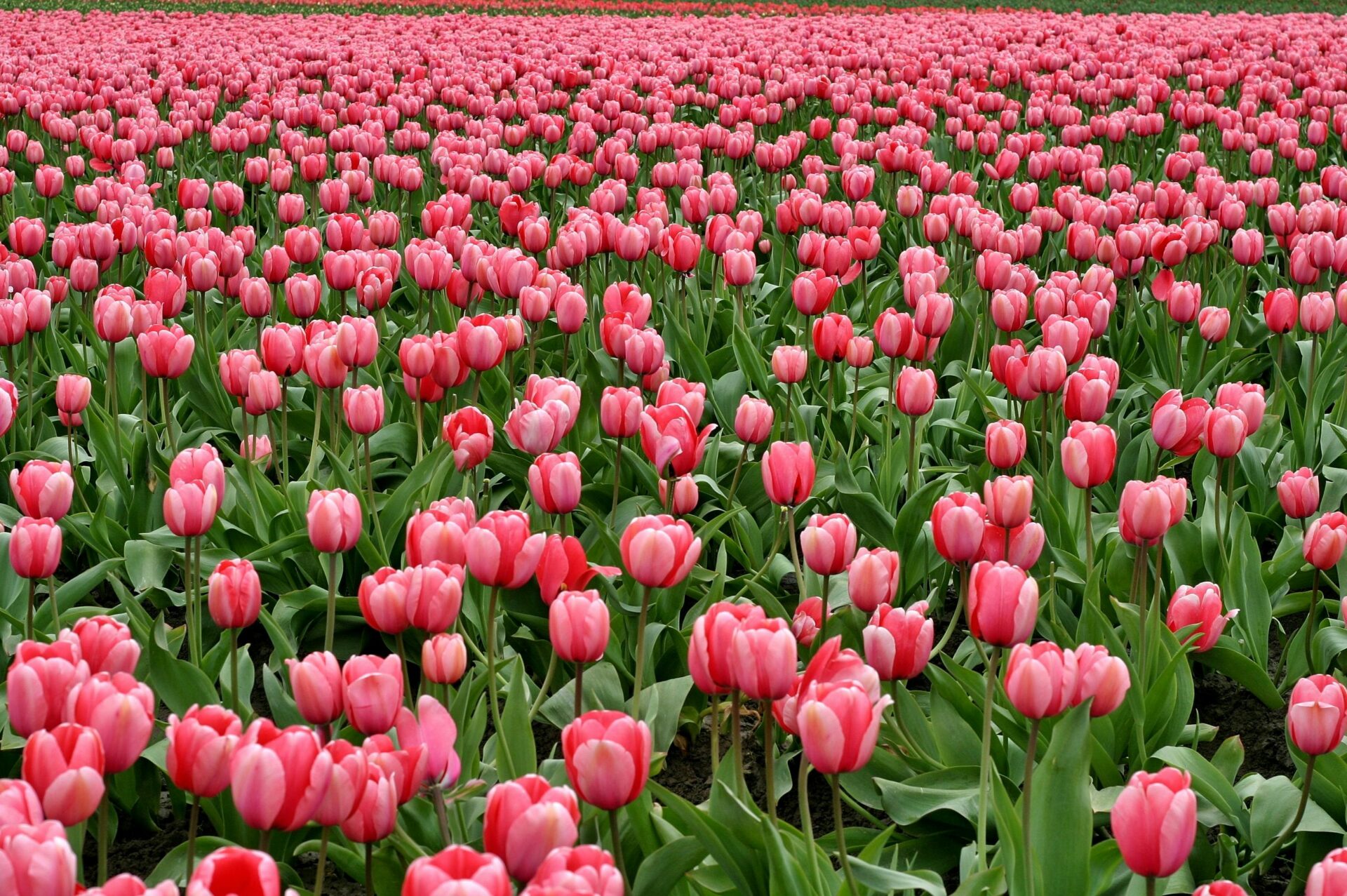
Al Fresco Dining and Café Culture
Eating outside is a real treat in spring. The old town fills up with patios and sidewalk cafés. I like to start my mornings with coffee and a slice of kuchen, people-watching in Hauptmarkt.
By lunch, tables spill out under umbrellas all along the historic streets—perfect for bratwurst or a fresh salad. Cafés near Nuremberg Castle give you killer views of the ramparts and rooftops. Meals stretch out longer here; I’ll linger with friends or jot notes in my travel journal. After a long winter, dining outdoors just feels like a reward.

Exploring the Old Town in Spring
Sightseeing in spring is a breeze. The weather’s mild, the crowds are thin, and walking the old town’s cobblestone streets feels relaxed. I love crossing the Henkersteg bridge and spotting flower-filled window boxes everywhere.
Climbing up to Nuremberg Castle on a clear day is a must. The rampart gardens bloom, and the city views are unbeatable under blue skies. As I wander, the city’s history feels close and real, with time to actually notice the details.
The Charms of Autumn: Scenic Walks and Seasonal Flavors
Autumn in Nuremberg? Honestly, it’s underrated. The city glows with golden leaves, the air turns crisp, and everything feels a bit cozier.
Colorful Cityscapes and Photo Spots
Old Town gets extra photogenic in autumn. Trees along the Pegnitz River explode in orange and red, and even a short walk feels special. I like to start by the medieval city walls, then wander toward Hauptmarkt. Half-timbered houses and narrow lanes look even more charming framed by fall colors.
Some of my favorite photo spots are quieter—Hallerwiese Park or the bridges like Kettensteg and Fleischbrücke. The weather’s usually cool but comfy, so I don’t mind spending hours outside. Early mornings sometimes bring a pretty mist, while late afternoons glow with golden light.

Harvest Festivals and Local Markets
Fall in Bavaria means harvest festivals and bustling markets. I always swing by Hauptmarkt for apples, pumpkins, mushrooms, and walnuts. Vendors pile their stalls with regional specialties like Federweißer (new wine) and Zwiebelkuchen (onion tart).
In September and October, you’ll stumble onto events with music, local food, and even traditional costumes. The smell of roasted chestnuts and fresh bread makes it hard to leave. These markets are a great way to taste local flavors and chat with friendly folks, all surrounded by autumn colors.
Cultural Events and Museum Visits
I like to use autumn’s cooler days to hit Nuremberg’s museums. With fewer tourists, spots like the Germanisches National Museum feel peaceful and easy to explore. I’ll spend an afternoon wandering through art and history exhibits.
Galleries and theaters in Old Town often put on special autumn shows—concerts, art workshops, you name it. If the weather turns brisk, ducking into a museum is a cozy way to spend a few hours. I usually check the city’s cultural calendar ahead of time, since you never know what pop-up events you’ll find.
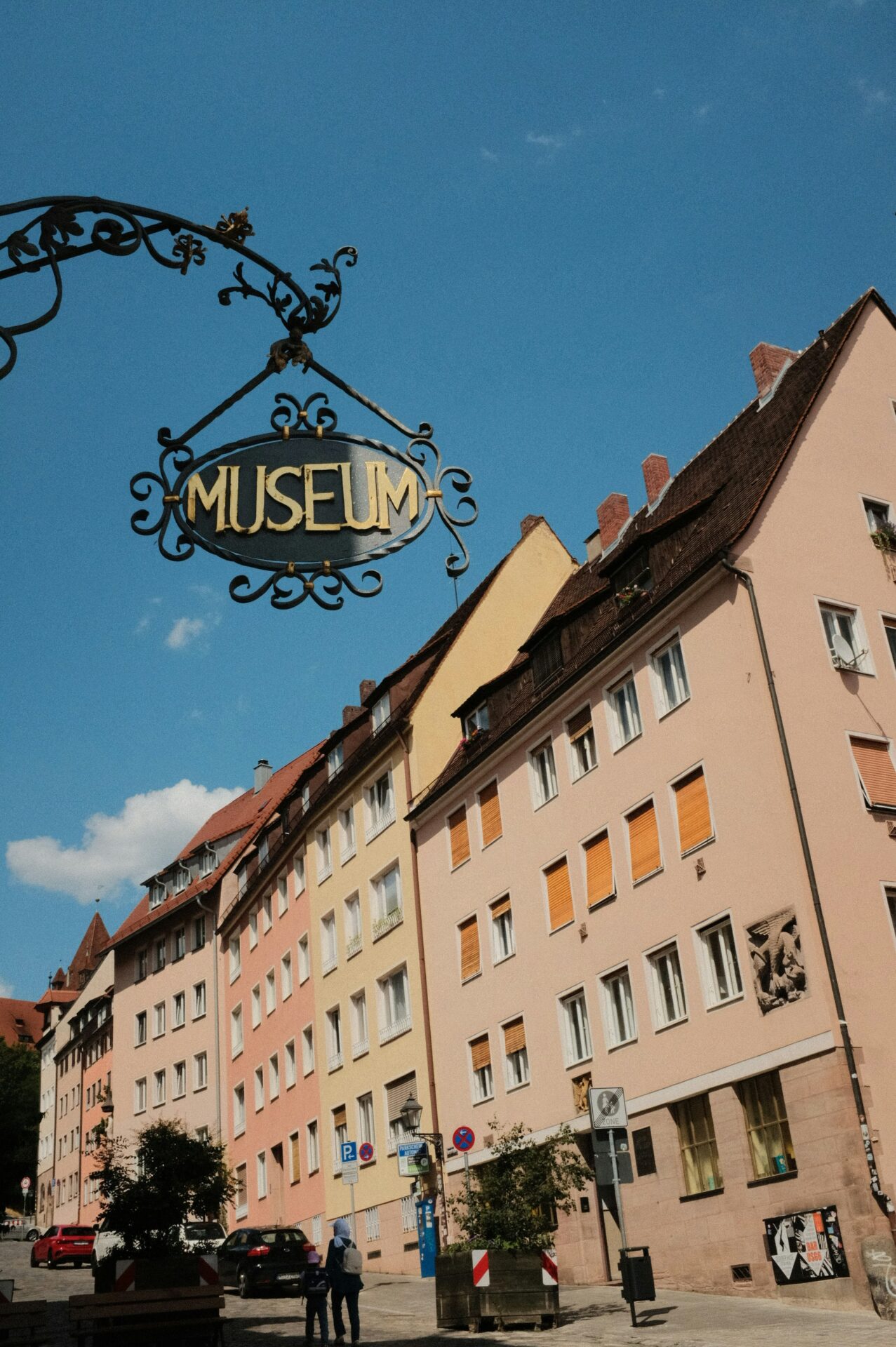
Comparing Seasonal Experiences: Christmas Market vs. Pleasant Strolls
Winter in Nuremberg is all about the Christmas Market, but spring and autumn show off the city’s quieter, scenic side. Each season brings its own crowds, costs, and travel vibes—so your choice really depends on what you want from your trip.
Crowds, Costs, and Travel Tips
The Christmas Market is jaw-dropping, but it gets packed. Old Town fills up with visitors from everywhere, especially from late November to Christmas Eve. I’ve noticed hotel and meal prices jump during this time, and last-minute bookings are risky since rooms disappear fast.
Spring and autumn feel way calmer. You can wander the medieval walls or visit museums without lines or crowds. Hotels usually offer deals during these “shoulder” seasons, and flights to Nuremberg or Munich tend to be more budget-friendly.
Pro tip: Public transport runs well all year, but I found trams and buses way less crowded in the off-season. That makes getting around a lot more chill.
| Factor | Christmas Market | Spring/Autumn |
|---|---|---|
| Crowds | High | Low–Moderate |
| Costs | Higher | Lower |
| Hotel Booking | Book Early | More Flexible |

Best Weather for Sightseeing
I love seeing Nuremberg dusted with snow, lights twinkling everywhere, and the smell of glühwein in the air. Winters can get cold—December averages run from -1°C to 4°C (30–39°F)—so bundle up if you want to enjoy the market.
Spring (April to June) and autumn (September to October) are milder, usually between 10°C and 18°C (50–65°F). It’s perfect for long walks outside. Parks like the Hesperidengärten bloom, and the Pegnitz river paths are ideal for a relaxed stroll. Rain pops up now and then, so I always toss a compact umbrella in my bag.
Clear days make the Imperial Castle views unbeatable. For me, sightseeing in these months feels way more relaxed—you don’t have to rush indoors just to warm up.

Insider Advice and Personal Reflections
If you love lively traditions and festive food, you really can’t skip the Christmas Market—it’s honestly one of Europe’s most famous. I still remember tasting gingerbread (Lebkuchen) straight from a stall.
Locals crowded in around the glow of the booths, and I sipped warm glühwein with friends. The whole scene felt both chaotic and cozy.
But maybe you value space and want to snap photos without a crowd in every shot. Late spring and early autumn have their own charm.
Historic spots like St. Sebaldus Church or the Dokumentationszentrum feel completely different when you can actually linger and hear your own footsteps echoing. That kind of quiet lets you take it all in.
If you’re into food, Bratwursthäusle at St. Sebald hits the spot any time, though I’d go off-peak for shorter waits. Wandering the cobblestone streets in golden autumn light just feels special.
Each season really does write its own story. Honestly, I’ve realized that timing shapes every memory you make in Nuremberg.

